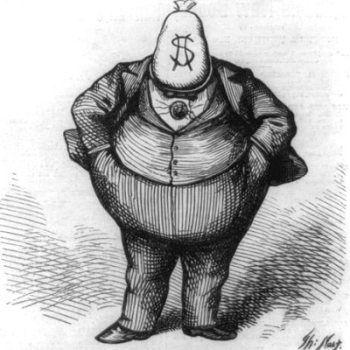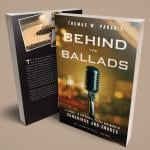For my first job out of college, I was hired as a fund manager.
Sort of. I landed an internship with a Protestant denomination as an assistant in their Social and Ethical Responsibility in Investments program. My official title was SER Associate, though around the office I was usually just called "the intern."
Part of the intern's duties was overseeing the denomination's portfolio of what they called alternative investments. This was money invested not just to maximize financial return, but to do good — money invested where it would help to create jobs or to provide housing in low-income, minority and working-class communities.
Alternative investments were expected to provide a "below-market" return, although I'm not sure the people who used that phrase really understood what they were saying. The real money people mostly viewed the alternative investment portfolio as a kind of charitable write-off.
Basically, though, this portfolio was a tiny, symbolic fraction of the denomination's pension funds — about $1.6 million — in very safe, low-risk, low-return investments. Mostly, we're talking CDs. Certificates of deposit with minority-owned and community-based banks and S&Ls. Certificates of deposit with community development credit unions. With the exception of a $100,000 or so in various community development loan funds, it was all fully insured and required minimal oversight. That's why it didn't matter that the intern was a 22-year-old English major — the portfolio mostly managed itself.
Most of the work I did managing this portfolio was more related to the alternative side of things than to the investment side. We had dozens of 1-year CDs at community-based banks all over the country. As those CDs neared the end of that term, I would contact the banks, requesting their latest CRA statement — the legally required report documenting their reinvestment and loans in their communities as per the Community Reinvestment Act. I would also contact the pastors and board members of our churches in those communities to glean what their experience had been with the bank and to hear their take on its work and reputation in their communities. When we got a good report from those local church folks, we'd renew the CD. If we got a particularly glowing report, we'd put more money there.
This was the job, and the particular task, that resulted in It's a Wonderful Life being my favorite movie of all time, because I soon realized that the Bailey Bros. Building & Loan wasn't purely a myth invented by Frank Capra. These institutions really do exist and sometimes they really are the only thing preventing Bedford Falls from turning into Potterville. And there are hundreds of them — still, even with all the tournament-bracket style consolidation going on in the banking industry.
These institutions take deposits and pay their depositors a modest rate. In turn, they loan that money out at a similarly modest rate. Their returns are lower than what you might see elsewhere, but so are their risks. They are tortoises, not hares. They seek out new loans not by blanketing the city in direct mail solicitations, but by planting and nurturing the habits and disciplines of saving and responsible borrowing within their own community.
To give you a sense of what I'm talking about, consider one piece of the alternative investment portfolio we had invested in the Pittsburgh-based Dwelling House Savings & Loan. We didn't have a CD with Dwelling House because Robert R. Lavelle — Dwelling House's real-life version of George Bailey — didn't fully trust that kind of flashy investment vehicle. So we had to get a passbook savings account there. It paid, if I remember correctly, 3.1 percent.
But here's the thing — and here's why the intern was able to beat the market — that passbook savings account at Dwelling House Savings & Loan was always going to pay around 3.1 percent. Never much more, but never much less either.
Some years that might not sound like much, but in 1991, when I was the intern, the bulk of the denomination's Wall Street investments lost money. So that 3.1 percent — and the 4.5 percent over all from the rest of the alternative investments portfolio — was looking pretty good. Thanks to George Bailey, the intern beat the markets.
Today's investment climate makes 1991 look like a Golden Age. In times like these, the safe, boring, modest returns paid by these simple deposits in these simple community-based banks don't look quite so boring or so modest. And "safe" sounds almost sexy.
Ironically, after the subprime mortgage crisis and the cascade of financial crises that followed it, investing in housing loans for working-class people looks more attractive than ever. These days, "alternative investments" seem like a pretty smart alternative.












